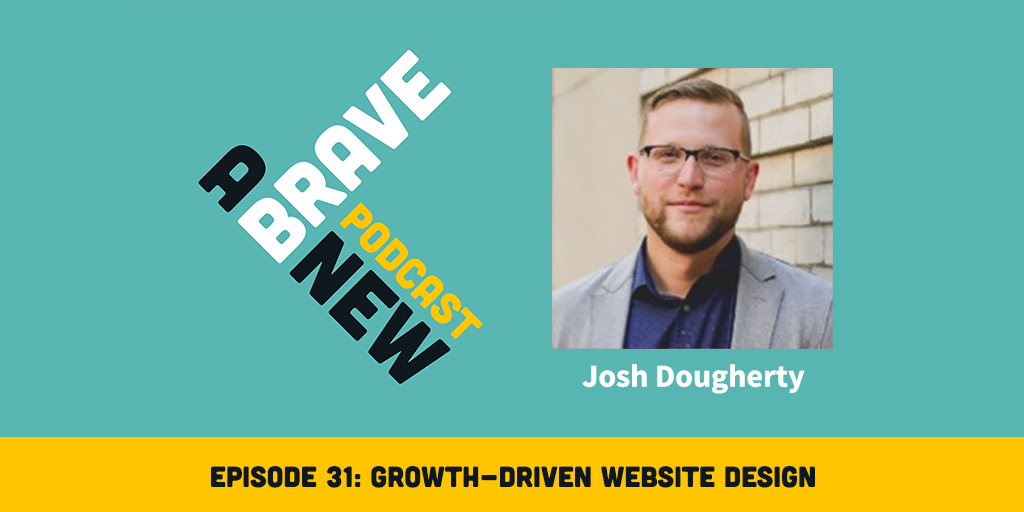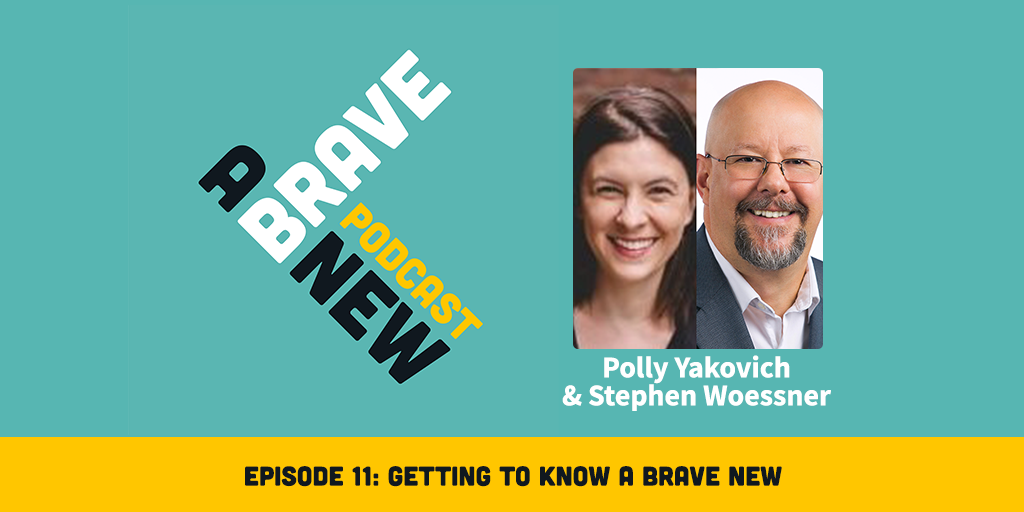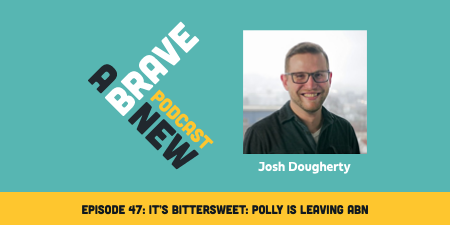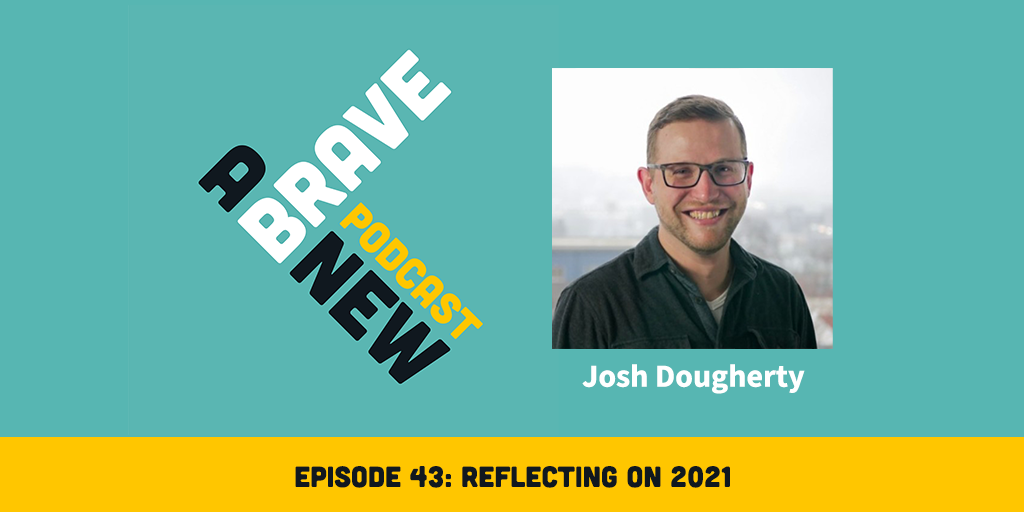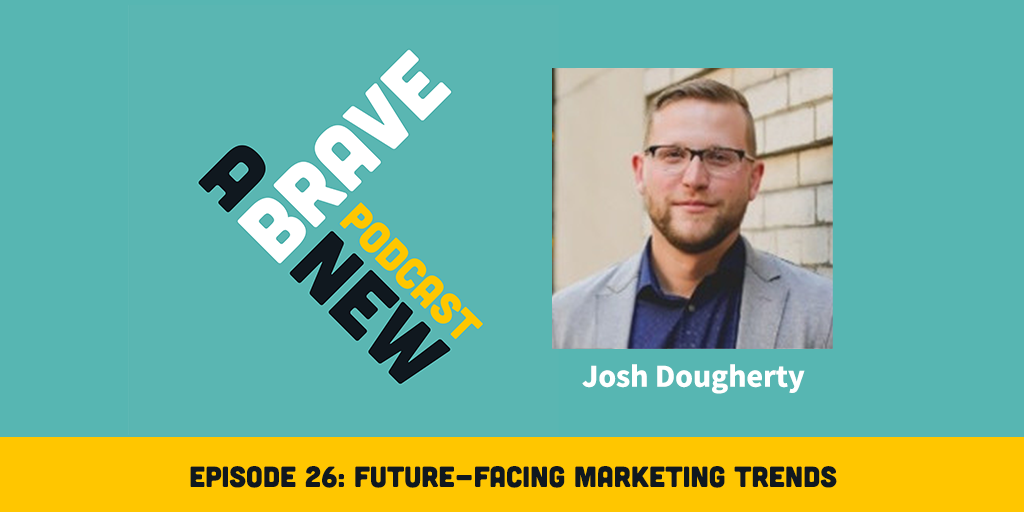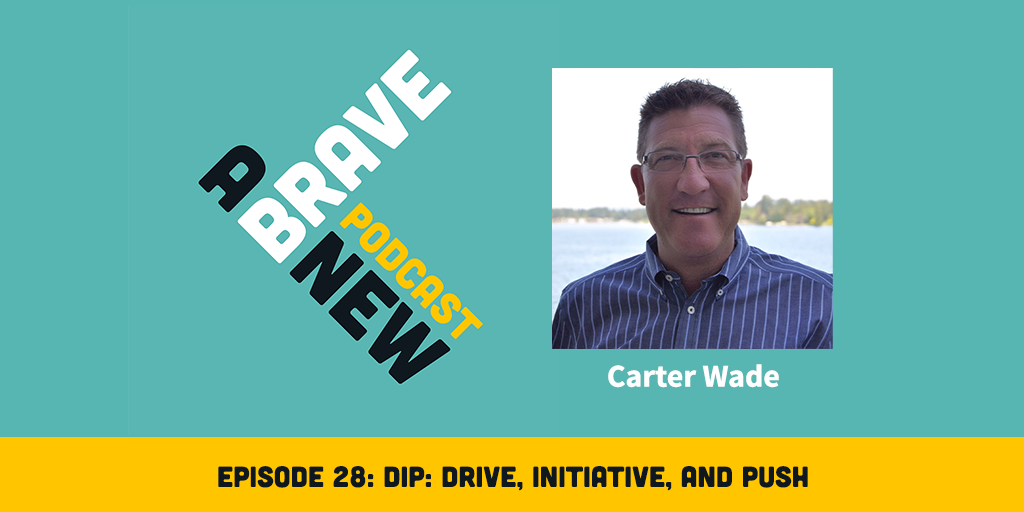Erich Ziegler is the Interim GM, EMEA at CircleCI. He is incredibly calculated in his decision-making and is laser-focused on prioritizing the most important business drivers to achieve impactful results.
Since joining CircleCI six years ago, Erich has risen to the challenge of building a team that successfully markets to developers. In that time he’s delivered >100% year-over-year growth, which is largely due to his data-driven marketing approach.
Prior to CircleCI, Erich led marketing teams at RingCentral, Intuit, PayCycle, and Netflix and was featured in the 2020 documentary, “Netflix vs the World” for his role in their hypergrowth.
What you’ll learn about in this episode:
- The system Erich created while at Netflix to manage and maximize demand gen efforts and why it worked so well
- How the model Erich created at Netflix for a direct to consumer brand transitions into the B2B space
- How to cultivate the relationship between marketing and sales successfully
- Thoughts on what marketing trends that might stick and which ones might fade over time
- Advice for new marketers about how to increase their expertise in marketing and to win others within their organization, especially in leadership
Additional resources:
Transcription:
Intro: Welcome to A Brave New Podcast. This is a show about branding and marketing, but more than that, it's an exploration of what it takes to create brands that will be remembered and how marketing can be a catalyst for those brands’ success. I'm Josh Dougherty, your host. Let's dive in.
Josh: Hello and welcome to A Brave New Podcast. I'm Josh Dougherty, your host, and I'm so happy to have you join me today. Today, I'm talking with Erich Ziegler, who's the interim GM of EMEA at CircleCI. Erich is really incredibly calculated in his decision making and is laser focused on prioritizing the most important business drivers to drive success. He's done this a lot throughout his career. He led marketing teams in the past at RingCentral, Intuit Pay Cycle, and Netflix. And if you ever watch the Netflix documentary in 2020, Netflix versus the World, he was featured in that documentary for his role in driving hyper growth at that organization. And over the last six years, he's been working with CircleCI, where he's really built a team that successfully markets the developers. He delivered a hundred percent year-over-year growth, greater than a hundred percent year-over-year growth, with those teams. And it's largely driven by this extreme dedication to data-driven marketing.
And, so, that's what we're going to dive into today. He's transitioned out of that marketing role to be this interim GM over in Europe now, but we're going to talk a little bit about his past work as a CMO and the incredible way he leverages data to drive results. So I think you're in for a real treat. And with that, I'd like to welcome Erich. Hey Erich, welcome to the podcast.
Erich: Happy to be here.
Josh: Awesome. Well, I know many people know you from your time at Netflix and RingCentral, but I'd love to hear about what you're doing now at CircleCI. I know this is a lot of exciting work and today you're serving as an interim GM for EMEA. So I'd love to hear about your work there and what's exciting you about what you're doing now.
Erich: Oh, thanks for asking. Yeah, it is really an exciting time at CircleCI. We've been in Europe for about five years, and we are growing pretty rapidly here. We have most of our go-to-market team in London and, overall, we have 90 different, 99, employees in Europe. So, just working on the overall go to market for Europe and then just managing the 99 employees. There's a lot of remote workers here that are from teams in the US. The recent COVID, and we bought two companies—just bringing them into the CircleCI family, making sure their voice is heard, setting up events for them, understanding what they're working on and how it all works has been my first two months. Ultimately, I plan to perhaps hire a full-time GM for EMEA. That's still TBD, but I'll be here for a year doing all the stuff that a GM does for Europe.
Josh: Awesome. Well, I want to take a step back. I think that's pretty exciting work, and I think working on a go to market obviously is really interesting and a different challenge than maybe the marketing that you've been doing previously. But, I want to talk step back into the marketing world since this is what our audience has focused on. And I know I mentioned Netflix and I said, tell me about what you're doing currently, but I'd love to step back into the Netflix era, which is now a while ago and hear from you a little bit about the disciplined way you managed demand gen during that time. Can you talk to me about the system that you created to help maximize your efforts while you guys were driving some significant growth between 2000 and 2007 there?
Erich: Yeah, that was a really fun time, and I almost remember like it was yesterday because it was so action packed. So, Netflix was all about the numbers in the early days, the metrics of my CMO there, Leslie Kilgore, kind of made me the quantitative marketing person I am today. She and I, I was her right hand person for all planning, forecasting, and marketing operations. And we created this concept called flex marketing, which would use literally yesterday's data to forecast a week, to forecast a month, to forecast a quarter, to look at the year, year-over-year rates. We had 17 unique acquisition channels that we would update daily on customer acquisition versus the dollars spent and use that to be much smarter than our competition on where our dollars were spent. So we were minutely monitoring demand gen dollars versus returns. We used this phrase, “triple down on what's working and slowly back away from what's not.”
And in addition to that, we took it a step further and looked at the lifetime value of individual channels. Believe it or not, how you got a customer, which channel they signed up, kind of dictated a little bit of their consumption, their consumption pattern. And so we were able to do lifetime values versus fully loaded CPAs for 17 channels and then stack what revenue and growth those 17 channels contributed to and adjust every other day, weekly on what's working, what needs help, what should be pulled back from what should be tripled down on. It was super dynamic, super fun, very quantitative driven.
Josh: Yeah. How did you decide … I love this concept of tripling down on what works and slowly backing away from what isn’t. How did … Define slowly for me, I guess I'll ask, like how did you decide how quickly to back off of an effort?
Erich: Not very quickly, that's why it's back away, but slowly. Can it be solved by harder work? Can it be solved by messaging? Can it be solved by a different partner? Can it be solved by negotiating better rates? If something wasn't delivering the ROI on the LTV that was acceptable, that was building shareholder value, we didn't immediately give up on it. We would discuss it and be, okay, maybe we're not talking about the right reason, the right messaging in this channel. Maybe we're paying too much for the heavy stock direct mail cards. Maybe we could go lighter. Maybe we could renegotiate a deal because we're going to pull out $300,000 from them. Maybe they want our money and will give us a better rate per dollar spent. So we would not just be like, oh my God, this isn't working. We would ask ourselves, are we giving it the full college effort, the college try, and try to optimize it.
But then for some, the brand wasn't strong enough to support yet. There were channels where we went into, we backed out. We went into, saw a little bit of hope, we had to back out a third time and hey, this is working. Radio for one, was one that didn't work at first. Brand got stronger, more people got DVD players. Two years later, spot buys, right? Cheap buys started to work. Next thing you know, by the time I’m leaving, we have national radio campaigns and sponsoring talk shows. But the first test did work in the best city, where we had the best penetration with the cheapest rate. So you know, you have to ask yourself, is it not appropriate? Are we not timed right, or are we doing something incorrectly, paying too much to not make that channel work?
Josh: And I think really intimately tied to this is that concept. You mentioned it briefly, that fully loaded cost per acquisition. Because when you're looking at your acquisition dollars in each channel, in a really in-depth way, you can make those decisions of when to jump back in somewhere as well because you have some margin to do it. But can you tell me how you calculate that? I think people often look at the cost per acquisition, looking at just the marketing dollars that they're spending or even the dollars they're spending on their marketing team. But how did you calculate, and even recently when you were working as the CMO for CircleCI before taking on this new role, how were you guys calculating that? Fully loaded at cost per acquisition?
Erich: It's very simple. If you're a public company and you have to report sales and marketing dollars, right? R&D, G&E, sales and marketing, cost of goods, as you record cost drivers, and sales and marketing is its own thing. If it's in sales and marketing, it needs to be allocated to an acquisition channel to get the fully loaded cost per acquisition. So, I take a very marketing-centric view because that's who I am. I allocate sales. If you have a sales team, I will allocate them to my demand gen channels. I will say this demand gen channel brought, keep the math really simple, 50 SALs, demand gen channel two brought 30, and demand gen channel three bought 20 SALs. Well guess what? Of the whole sales of the AEs, I'm going to go 50% of the cost in channel A, 30% in channel B and 20% in channel C.
Now that's as simple as it gets and it's never like that. You have to maybe do SDRs and AEs and customer support, but you can find drivers that are driven by your acquisition channels to allocate those costs. So that's the one step that not a lot of people take. They feel like, especially with the rise of the revenue department revenue team, which I don't really agree with, I often believe that we're the entire company for revenue. And so sales is a part of that. So is marketing but the role of revenue and marketing sometimes falling under revenue, that kind of gets lost. I won't stand for that. I say it starts with the outbound demand gen channels, and sales can be put underneath those due to what demand we bring in and is required of sales to work to make the closes. So there's that.
In addition, free trial costs, if you look at accounting standards, you have to allocate free trial as a marketing program. It gets people in to try. So I get free trial allocated into the channels. That's pretty easy. If you have a good backend system, how many minutes did they use? How many discs did they get sent to them on the pretrial? And that's the cost. Then of course there's overhead of your marketing team. I've taken care of all of sales overhead, but now I'm taking my market team, that one I can get really finite with. I can move the VP of demand jet into all the channels. I could move SEO director to just the SEO channel. And then you're allocating a lot of the brand content PR. You might allocate them evenly, you might distribute them on the number of signups they get, but distribute it. Distribute every Q1 sales and marketing was 10 million. You need to distribute 10 million across your demand jet channels to get the fully loaded cost per acquisition.
Josh: And I think it's interesting that you mentioned, I want to make sure I heard you, that you would even attribute your brand spend, which isn't maybe directly allocated into of course demand gen, but it's part of getting the word out about the company. Right.
Erich: I got a great quick little story on that. One of my buddies, very successful, Neil Rossy, and he started out doing all the online acquisition, and we would do TV ads and it would incur TV. I had to distribute that across all the channels, significant amount at points. He had come to me and goes, give me more. My lift in natural SEO and brand SCM has outweighed the incurred costs of TV spend that you've allocated to my channel. Which you just love, right? Now, you're like wow, brands. And of course you've seen Netflix do so much branding now. Buying billboards, buying buildings. But that was the beginning of that. I love that when it was like, you know, always think, oh I'm going to incur all these extra costs. Do you think you can handle it? The reverse happened. He said, you've lifted, got a 30-40% lift in all my channels for that cost that you allocated me. Can you do more? Yeah. So it's not always negative allocated costs. It can also lift.
Josh: Totally. Totally. So we talked about principles here and a little bit about Netflix, but you've also, in your career, spent a lot of time in B2B at RingCentral. You, until recently, were running marketing for CircleCI. Can you share a little bit, how does the system change or how do you look at it differently when you're in the B2B space and you're maybe not selling a simple SAS project or product, or a subscription product, which is kind of what Netflix was or many B2C products are?
Erich: Well, first of all, yes, Netflix was actually very easy because it was yesterday’s sign up, people signed up, they didn't have to talk to a sales. And so when I went to a company called Pay Cycle, RingCentral, Central CircleCI, I had to adjust to everything that sales brings to the next average deal: size, velocity, kind of close, the old series decisions funnels of NQLs, SALs, SQLs, closed ones. So the first thing I would say is you're actually kind of bolting on one or two sheets or calculations to your acquisition, right? Doing that waterfall of what is the velocity to closed one. Can you stack them from the SALs that you brought in the past six months? Or can you go from SAL to SQL to closed one and model that in to get your lifetime value. I mean, ultimately what you kind of decide on is where am I going to officially do the handover to sales?
And I like to go all the way to SQLs because it means that my team is being held accountable for bringing the, not just sales accepted lead, but sales qualified leads. So it makes them get quality leads and not just fill the top of the bucket. Now that involves a long handshake with a lot of trust on SDRs and AEs taking it to SQL, but there's a lot of trust on their airport back to us that we bring in quality MQL in their sales. So let's say we start from the SQL, what am I doing now? That's my key point. That's my cost for SQL by the channel. Then you get three months, six months of historical SQL, closed rate, average deal size. Now you can get the LTV per SQL by channel. There you go. Now you got your LTV and you got your CPA. SQL is your key. Anyone who remembers from the old access file, that is the key that brings the two together. Cost for SQL, lifetime value of SQL, boom, miniature ROIs, every dollar spent in sales and marketing.
Josh: I think you're able to make decisions really easily.
Erich: I would add one more thing. Yeah. Needs to be spoken about. Lead map, lead map, lead map, lead map. We meet with sales once a month, and we look at all the channels and all their current conversion rates. It takes the emotion out of the age-old battle. You're not bringing me good leads versus you're not working these leads hard enough. You're just waiting for the next shuffle to come around, right? Yeah. And what lead map is again, got to be IT marketing centric by the channel. Every demand gen channel has its own unique conversion rate. Where are you in the funnel of your decision when you typed in CircleCI into SE, you're pretty far down. Where are you when you're like fast build and deploy, you're taught you're far up or I met you at an event, or I met or you signed up.
These determine your conversion rates. And so what we do is, every month, we look at 17 channels. Now sometimes we combine them into five groups top of way, top of the funnel, middle of funnel, lower funnel, bottom of the funnel because they have conversion rates and 17 channels can get a little too minute. So ones that have similar conversion rates, you might group in the ghetto to get mass larger numbers and you look, okay, we brought in more from this channel, conversion rate went down, maybe that's not the best. We brought in no new ones and this conversion rate's going down. What's going on? Sales is there, do we lose a couple AEs? Are you just sitting back and waiting for the next shuffle by looking at that on a monthly basis and highlighting things that are changing, highlight things that are good, that sales enablement we had for that channel a month ago was kicking in and conversion has gone up 20%. Great, let's do that for more channels. It really, because it could be emotional. I mean CEOs love to feed that battle between sales and marketing and I get in front of it and say, "Nope, we're not going to get emotional. We'll let the numbers speak to us. Let's look at lead map on a monthly basis, how the channels are converting, what we're bringing in. Are we bringing in too much?"
And we've used that to make this discussion fruitful and good for shareholder value.
Josh: Nice. Yeah, I think that relationship and taking that emotion out is so important. Because having worked with so many sales and marketing teams, that's the battle that happens every single time. Can you talk to me a little bit in your past experiences where you've been building that relationship. So one is that lead map and having those monthly touchpoints. What are other things that you've done in the past to strengthen that relationship with a sales team and build a stronger relationship so you guys can be successful together?
Erich: I mean, nothing beats discipline and professionalism. I mean, I come into a marketing team and I put together the numbers, and I know where every dollar is spent and when a head of sales sees that, they're pretty much at ease that I'm doing my best to optimize every dollar I'm given from finance. I mean that sets a tone that has, again, it goes all the way back to my Netflix days by the numbers. I always got to say the quote, "And marketing need to know its numbers better than finance because the first place they come looking for a head is in business marketing." So true. And so I want to know my numbers better than the VP of P&L because they work on Excel sheets. We work in reality and I need to show them what the reality is and really explain it to them. I mean it's something that happens.
And so knowing those numbers is huge in building that relationship with sales. There's too many marketers out there that I call silver bullet marketers. In the past, they've had some great idea that increased sales by 40% and then that goes away and they don't know their numbers. And then they're making stuff up, and it gets emotional. I will never ever be that person or do that. It's the numbers that drive shareholder value that you can lead on and take the emotion out. Yeah. Yeah. So lead map is another big one. And I mean it goes a long way when you explain what the different channels are that are getting the AE their leads. Yeah, some of them are going to convert at 3%, some are going to convert at 40%. Let's make it easy. Now, some are going to convert at 3%, some are going to convert at 30%. But guess what, if I'm getting that 3% conversion at 11 times cheaper than that 30% line, it's better. I'm going to make money for the company. So just being clear that, yeah, sure the event leads send them to the SDRs and they are, a bunch of them are, people just wanted t-shirts, but it's not costing us a lot.
So they'll keep working and then the SCM bottom of funnel brand leads, they should be converting at 40% because they're at the end of the funnel and here's why. And sharing that really goes a long way.
Josh: Being willing to invest in the conversations to actually teach people about how to think as marketers so that they can understand that.
Erich: Absolutely. We have a quarterly powwow between all my demand gen channel managers and the AEs. And that's one of the coolest meetings ever because you just realize that level of sharing information goes a long way.
Josh: Yeah. Well one of the things you mentioned, I think that was really interesting was this idea of silver bullet marketers, and this is something I run into a lot.f It's all going to be about gorilla marketing now, and that's going to transform marketing. It's all going to be about, I don't know, TikTok today. People are talking about that's going to transform marketing. You've been around this for 20 years, so I'd love your perspective on what trends you think you're seeing now as you observe stuff and saying what trends are like just going to pass by. And then maybe what are a few that you think are going to stick around that we need to be thinking about seriously to add into our mix? Because I don't ascribe to the fact that there's only going to be one silver bullet either. So yeah, talk a little bit about that.
Erich: I mean, I don't know if I want to talk about specific trends because I'm going to probably get the pie on my face because I can't tell the future. What I would say is two things. One, Flavor Flav said don't believe the hype. Like sure, Gorilla marketing has a place. Sure SE optimization has a place. Growth hacking has a place. Everything has a place. But if you put all your eggs in that basket, I mean people are trying to sell books when they're talking about how huge these things are, which is great, but it's not going, You go into growth hacking, you also need strong demand gen. You also need a decent brand strategy. Like you got to mature. I mean these things have to happen. So yeah, growth hacking is an amazing way to get started and really kind of do something.
But is it everything? Absolutely not. Search. I mean I remember when search engine optimization was going to be the give all take all the entire world and then, okay, it's just one of the channels. And with all the black hat and all the getting locked in jail stuff, everyone learned, you’ve got to be a little careful too. So there, just put it in perspective, put the trends in perspective. Now we're seeing a lot of trends right now. The biggest one, valid as hell, I want to be very clear, very, very valid, is product led growth. You're seeing these tables, you're seeing these valuations, you're getting Data Dog and all these huge company evaluations in this product led growth. And they're right. I would say that the free trial has come home to roost, especially under this, the possible recession. You can only give people more free trials so long, now you need product engagement to lead the growth.
Great. Does that mean we don't have any more demand dimension? No, you got to sell the top of the funnel. So you got to balance that out too. I mean, I'm a big believer in product led growth, especially with the pretrial offer. I think certain target markets, engineers being one of them, it's great for product led growth, but does it all? Is everything pro? No, you can't have, you need sales, you need top of the funnel, you need brand, you need PR. So just definitely get up on what's new. Trends are happening. Everybody gave everything away for free over the pandemic and now that's coming home to roost. Product growth is totally valid right now and everybody should be looking into it, but it doesn't mean it's everything. That's basically the way I feel about that.
Josh: Yeah, I mean I think I agree, and as I think about it, it's really giving our customers the credit that they deserve that each of them are at a different point of their desire or their readiness to buy. And so if you throw out one element of your marketing mix or of your sales mix, you're essentially knocking out one of your segments of customers where they're at, where they might be ready to engage.
Erich: Totally. You know what doesn't go out of fashion, a buyer journey.
No one wakes up in the morning and randomly buys anything. There's a journey and it's hard work and it's not easy and you’ve got to adjust it almost every two years in your personas that drive the buyer journey switch as a product matures and goes through the life cycle of adoption and all. But personas and buyer journeys do not change and they can drive all those things we just talked about. When are they doing SEO, when are they doing an event? When are they thinking about the size of your brand? When are they looking at customer service? When are they inside of the product? And really want those moments of aha to get product led growth is shared through their whole company. All of those are stops along the buyer journey and that never changes.
Josh: I want to zoom back to one thing. We got to talking about buyer journey, about trends, about different things. But I want to zoom back to one thing that is more connected to the flex marketing model, and that's your ability to plan and forecast out six months with a huge degree of certainty. I'd love to hear how flex marketing makes that possible. And I know this is part and parcel. If you're working as a CMO or in marketing leadership in a public company, you need to know how to forecast, right? Because you've got to show, yes, quarterly earnings, all these sort of things. But can you tell me how your marketing approach makes that possible?
Erich: Everyone's rolling their forecast six months in advance down to acquisition and cost spends and projects. Every month, you close the last month, and you're projecting out another six months. We use this term projection. There's the actuals, there's the targets, but then there's the projections. What are you seeing now? Don't think, you know the target you’ve got to hit. How are you projecting the next six months using year over year that you saw last month, quarter year over year or maybe you don't even have the luxury of year over year. What did you see the last quarter? What was the trend there? How was the month to month trend changing? What was the exit rate? You're literally pushing out your forecast a month to a month every month for a six month running forecast. Some people take the first week of the month, make that their month and use that to project the month and then use that month to project the next five.
Some of the things are more planned like events, you know exactly what your budgets are for six months going out, sign the contracts, content creation brand. Some of the harder, the more like non-variable demand gen scenarios can kind of do this. It gives you two things. One, it gives you people on your toes to think forward. And then two, I mean I meet with finance once a month, once a quarter. I'm in charge of my numbers better than anyone, than they are. And so it builds this. We know what's coming up. We've got the rolling forecast. I mean it's one of those things that really helps a head of marketing sleep at night when you're just slightly looking ahead six months and it's a real bottoms up rolling forecast. You know what's going to happen over the next six months.
Josh: Awesome. Well as we wrap up, just a couple more quick questions. One is for people who are maybe just getting started, you have a huge amount of experience in the marketing space. How do you think for someone who's getting started in marketing, what can they do to win others over in their organization to marketing and to really increase their expertise quickly? Because I think stuff is changing quickly. You’ve got to get good fast to survive in the marketing space now. What is the advice you give to someone getting rolling in their career?
Erich: So leverage the marketing stack. Your company will have some kind of marketing stack, some kind of information. Make the business cases for what you want to do via the numbers. Don't be the marketer who goes in there with a good idea and no number and business case to back it up, even if it's one week of data or a $2,000 test via SCM. At least it's a start. Get quantitative and use quantitative analysis to build the business cases for what you want, which will then lead into the whole flex marketing, which will lead into the forecasting, which will lead into growth. The marketing is not a playground, it's real with the stack. Marketing was called at a CEO table about 15, 20 years ago with the marketing stack. And so jump into that. And the second thing is don't be a 1.8 year jumper in your career.
That's stay a while, learn jumping around can get you in a lot of, can hurt you. I mean, of course if a company's totally horrible culture or not promising you things that they didn't deliver. You have to look out for yourself. But I think too many people think vertical career path early happens from jumping around when, in all honesty, you're not seeing the next levels and you're not carrying over the knowledge in how it ladders up. I mean, my career was, it says that an average of about seven, six to seven, years in each and every company that I've been at. And I'm much happier in the people that I've see that are 1.3, 2, 1, 9 months, two years. First of all, you're not seeing the ladder up. And second of all, people are get suspect of, why can't you stick it around for more than two years?
Josh: Yeah, absolutely. Perfect. Well, last question I ask, which is a question I ask everyone is about superpowers. I'd love to hear what you think your superpower is, what your strength is as a marketer.
Erich: Well, I think it's the combo of what I say is my yin and the yang above my head is as a manager, it's drive for results, balance by self-awareness. So I've worked for some not so nice people in my career who had no self-awareness, and I promised myself I will not do that. And man, have I seen the loyalty and the drive that comes out of being self-aware. How do I project myself to other people? Am I here to help them? Am I here to give them merit coverage? Am I doing what makes them successful, and how are they seeing me? I'm a deep voiced northeasterner originally. How is that running off on people? Being self-aware, you have a lot of self appreciating humor. I give people a lot of praise. I let you know. That self awareness. But you have to balance it because sometimes people can be too touchy-feely.
We’ve got to drive for results. We're not a knitting club, we're not a charity. Maybe you are a charity, that's fine, but we have people giving us money that want to spend [inaudible 00:32:24]. So drive for results. And if you can do that, the superpower is balancing those two. Tell people and let them know we're in this 40 plus hours a week to be accountable. Own your numbers, drive for results. But I'm not going to be a jerk to you. I'm going to help you get there. I'm going to share what I've learned. You make a couple mistakes, let me know right away and that's fine. You don't let me know. That's when you get in trouble. That kind of balance. I wish I, God, I wish more people, I wish they taught it at some of the Ivy Leagues because it's just not around. That self-awareness gets lost in the shuffle.
Josh: Totally. I can't agree more. It's something I've learned over my career as I've worked for more bosses, obviously working for myself now, something I strive to have that is another person who has a deep voice and lots of opinions. How do you figure out how to make sure people are having the space that they need to be successful?
Erich: Totally, totally. That's why I'm a very big fan of all the DEI and all that stuff that's going on. Really it's needed in this industry because you don't have to be a jerk to be successful. And so many people, it's, I don't know why it's people, I think, I mean I've actually come down to it's, a lot of them are just fearful. But that's maybe for another podcast.
Josh: Well, thanks so much for being on. I'd love, is there a good way for people to stay in touch or follow up with what you're working on or what you're thinking about?
Erich: LinkedIn. I'm not a big podcast or a blogger. I feel like all my energy should be put into the shareholder value of my current company. I'm happy to do these sort of things every once in a while and share my knowledge in this sort of way. But if people have questions or want, I'm happy to do even one on one and answer questions via LinkedIn. So I'm easy to find on LinkedIn and people, I've had follow-ups from events or other podcasts where I've actually mentored one or two people through that. So get in touch with me via LinkedIn. I'm happy to respond.
Josh: Awesome. Well, Erich, thanks so much for your time. I know you're a busy man, but I appreciate the conversation and all the knowledge that you shared.
Erich: Hey, thanks for having me. It was a good chat.
Josh: All right, talk to you later.
Erich: Cheers.
Outro: Thanks for listening to this episode of A Brave New Podcast. Go to a brave new.com for more resources and advice on all things brand and marketing. If you enjoyed this episode, show us some love by subscribing, rating, and reviewing A Brave New Podcast wherever you listen to your podcasts. A Brave New Podcast is created by A Brave New, a branded marketing agency in Seattle, Washington. Our producer is Rob Gregerson of Legato Productions.
Similar Articles
OCT 11, 2021

The Beginner’s Guide to Generating Inbound Leads
Marketing doesn’t have to be painfully intrusive, like getting yet another telemarketing call right when you sit down to dinner with your family.
OCT 11, 2021

The Beginner’s Guide to Generating Inbound Leads
Marketing doesn’t have to be painfully intrusive, like getting yet another telemarketing call right when you sit down to dinner with your family.


